Sun 3 Jul 2011
PRIME TIME SUSPECTS Part 4.1: Themes and Strands (Durbridge Cliffhangers).
Posted by Steve under Columns , TV mysteries[8] Comments
by TISE VAHIMAGI
Part 4.1: Themes and Strands (Durbridge Cliffhangers)
While most UK TV viewers surrendered to the spell of the Scotland Yard detective series during the 1950s, another sub-division of the TV genre was attracting something of a mini-following in Britain. The thriller serial.
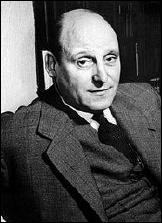
Once settled into the post-war comfort of its role in British life, BBC Television began to develop the format of drama series and serials in earnest. A television serial template was struck, conforming at first to the nervous frenzy of “live” TV production and then to a uniform house style (the half-hour, six-part format).
When Francis Durbridge emerged in television in 1952 with the six-part thriller serial The Broken Horseshoe, the first of this type of programming, he combined the psychological thriller with the multi-part mystery.
The two notable genre-related forms had first appeared in the autumn of 1951: the single play Night of the Fourth (a detective story with a psychological theme; adapted from the German play Sprechstunde) and C.A. Lejeune’s six-part series of adaptations of Sherlock Holmes stories (presented as a series of self-contained, 35-minute plays). It is interesting that these two elements should form the basic structure of what became in the 1950s (and continued through into the 1960s): the BBC Durbridge mystery-thriller serial.
Durbridge was a radio writer (he had introduced BBC listeners to his amateur sleuth Paul Temple in 1938 [Send for Paul Temple]) whose name on the television credits could be relied upon to raise high hopes.
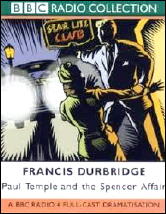
He treated his themes — murder, smuggling, treachery — with an unsentimental, civilised levity. There was in the writing a blend of the ironic and the ruthless, a switch in mood from amusing bafflement to disturbing seriousness, that was tartly refreshing in itself while requiring the utmost concentration and evenness of style in the direction.
While some type of criminal activity was usually embedded into the narrative (be it race fixing, dope smuggling, kidnap), it was the psychological bewilderment of the hero that was often the focus. The Teckman Biography (1953-54) and Portrait of Alison (1955) both move around characters who are supposedly dead but who mysteriously reappear, alive and informed and involved in a criminal enterprise.
In Melissa (BBC, 1964; remade 1974) it is the “wrong” person who is reported dead. A sense of timeliness was displayed in his Operation Diplomat in late 1952, concerning the mysterious disappearance of a top secret diplomat, and seemed to be perfectly keyed to the 1951 defection to Russia by British intelligence officers Guy Burgess and Donald Maclean (although Durbridge claimed coincidence).
The BBC’s treatment, with its rococo embellishments and general atmosphere of menace thickened by producer-director Martyn C. Webster’s staging in the early days (by producer-director Alan Bromly in later years), was as assured as any TV viewer at that time had a right to expect.
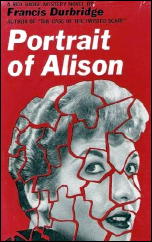
On the other hand some of the subsidiary scenes and characters were, if anything, under-developed. But the serials’ main weakness was the absence of expressive cutting and visual flow. As a result, certain half-way stretches of dialogue became tedious to watch; and the essential awareness of the writer’s shifting tensions yielded disappointingly to the easier mannerisms of any conventional thriller.
The typical Durbridge world of the thriller is comfortably middle class (of the post-war era), breezing with terribly English country-inn-and-gin types, often with the hero a self-sufficient artist or a writer, and always with the inevitable, and dependable, Scotland Yard man on hand when necessary.
Heavily dependant on dialogue and an end-of-episode hook, the serials were often little more than televised radio scripts, but this was to the serials’ advantage in the early days. In the Durbridge universe, everyone is tainted with a suggestion of menace or deceit. Absolutely no one is to be taken on face value. Information is deliberately withheld from the viewer, as well as the hero, almost to a point of irritation.
These complicated, intellectual crime riddles tended to overshadow his clearly stock characters (always in search of that elusive depth), somehow making him the ingenious master of the television mystery serial for almost two decades, until the times changed and the old-fashioned formula evaporated.
It wasn’t long before the UK TV schedules were thick with mystery-thriller serials, all designed and delivered in the Durbridge mould. Author Michael Gilbert studied the Durbridge form and wrote the underworld thriller The Crime of the Century (BBC, 1956-57); screenwriter Jimmy Sangster turned in the murder mystery Motive for Murder (ITV, 1957), and The Assassin (ITV, 1958), involving the hunt for a killer-for-hire; and Anthony Berkeley’s 1937 novel Trial and Error, about a murderer setting out to prove the innocence of a wrongly accused man, was adapted as the six-part Leave It To Todhunter (BBC, 1958).
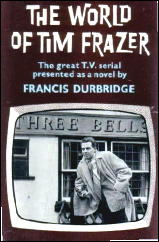
Rival channel ITV’s serial master was Lewis Greifer, a prolific radio and TV writer whose work in the serial format (in collaboration with producer-director Quentin Lawrence) was not too far removed from the Durbridge world of psychological terrors. The hero faces an identity crisis in the murder mysteries Five Names for Johnny and Web, both 1957; and in The Man Who Finally Died (1959) is confronted with the return of a “dead” man, leading to a convoluted Durbridge-style unravelling of the past.
Astute enough to notice the secret agent genre forming on television by the beginning of the 1960s (with the growing popularity of ITV’s Danger Man; the 1960-62 half-hour series), Durbridge created the lengthy serial The World of Tim Frazer (BBC, 1960-61) featuring a working-class engineer who is recruited by a shadowy government department into acting as an undercover agent.
The unprecedented 18-part serial was surprisingly well-received and even heralded as the successor to the still-popular (via radio) Paul Temple. The detached and skeptical Frazer (performed by a brooding Jack Hedley with insolent confidence) was essentially an outside observer of events who had licence to move through the well-heeled Durbridge milieu with barely-concealed contempt of what was by now stock 1950s British types.
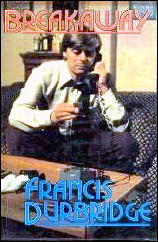
The peculiar success of Tim Frazer continued Durbridge’s celebrity as the master craftsman of the British thriller serial (other contemporary thriller serials were gauged on their ability to render the “Durbridge touch”; Lynda La Plante would receive similar genre worship during the 1980s).
Whether he was blinded by the celebrity or simply coerced by BBC producers hungry for more of the same, Durbridge pressed ahead into the following decades (up until his last serial, Breakaway, in 1980) by giving the viewer (and the producer) more of what he thought they wanted: long, drawn-out, unnecessarily complicated plots populated by thinly developed 1950s-type characters, leading up as always to a sudden surprise revelation in the final episode.
In a television-viewing age that had already experienced by this time a post-Z Cars (BBC, 1962-78) world of stark social realism (explicit violence, police corruption, race conflict, etc.), Durbridge proceeded, seemingly quite oblivious of events around him, to turn out facsimiles of his 1950s plots.
What was at one time the electrifying anticipation of the coming of “another Durbridge thriller” in the 1950s and 1960s had developed by the 1970s into a non-event of bafflement and disappointment.
Note: The introduction to this series of columns by Tise Vahimagi on TV mysteries and crime shows may be found here, followed by:
Part 1: Basic Characteristics (A Swift Overview)
Part 2.0: Evolution of the TV Genre (UK)
Part 2.1: Evolution of the TV Genre (US)
Part 3.0: Cold War Adventurers (The First Spy Cycle)
Part 3.1: Adventurers (Sleuths Without Portfolio).
Part 4.0: Themes and Strands (1950s Police Dramas).
July 3rd, 2011 at 7:25 pm
Francis Durbridge has come up twice before on this blog.
First as the screenwriter for MELISSA (1974), one of the later mini-series murder cases (in color) that Tise talks about here. It’s available on DVD, and I reviewed it here:
https://mysteryfile.com/blog/?p=1589
That review was followed immediately after by a review by David Vineyard of THE TYLER MYSTERY, a “Paul Temple” crime novel that Durbridge wrote in 1957
https://mysteryfile.com/blog/?p=1590
I’ve been intrigued by Durbridge and all his accomplishments ever since, not that I’ve had a chance to do any more about it.
But given this second nudge on the part of Tise, maybe I will now. (More of his material must be available on DVD, somehow, somewhere.)
July 4th, 2011 at 2:26 pm
By the ’80s, Durbridge’s stuff had become rather outdated, in the sense that he was not interested in current events or social realism. However, for obvious reasons I suspect that if viewed now they would have dated far less damagingly than those more serious dramas. The Germans were enormous fans of the Durbridge thrillers, probably because they were pure thriller, rather than relying on stuff torn from current affairs.
Amusing to note that when BBC Enterprises started merchandising the Paul Temple series, they played up the fact that it was old fashioned, ‘period’ stuff.
July 4th, 2011 at 3:47 pm
Tons of Durbridge mysteries were subsequently re-adapted with German casts on German TV, and were so called ‘streetswipers’, because in those days ,there were only two or three channels.
The Doc
July 4th, 2011 at 5:45 pm
As well known as Francis Durbridge is (was) in Britain and Germany, my guess is that less than one percent of the people over here would have recognized his name, even when he was at the height of his popularity over there.
Today? Even a smaller fraction of that.
July 5th, 2011 at 10:02 am
Well, among the population over here, that watched TV in the Sixties and Seventies ,Durbridge is a household name.
TheDoc
July 5th, 2011 at 1:09 pm
The BBC did their usual efficient job of destroying a great many of the old Durbridge serials. I suppose that in the current financial climate it would be seen as wasteful to restage one of them for TV (rather as they did the fairly recent live version of THE QUATERMASS EXPERIMENT), but it would be interesting to see what the response from the public would be. Ludicrous as some of the plot twists are in the cold light of day, it’s very easy to get hooked. Good story telling is good story telling.
December 26th, 2014 at 8:20 am
My book “Francis Durbridge: a Centenary Appreciation with an Annotated Listing of his Novels and his Works for Radio, Television, the Stage and the Cinema” will be published early in 2015. To receive further details, email melvyn.barnes@oldnewton.com and I will send a flyer when it is published.
February 28th, 2018 at 3:42 pm
In spring 2018 Williams & Whiting will be publishing my new book “Francis Durbridge: The Complete Guide”. A revised and very greatly expanded new edition of my earlier Durbridge book (about 40% bigger). Durbridge’s sons gave me access to his papers and financial records, which has resulted in numerous new discoveries. It will also be more international in coverage.